
Using a mobile fish protection device at reclamation water intake, when taking sea water at suction pipes, pools.
Water resource systems of small watercourses, including biological resources, even in small volumes, are sensitive to the withdrawal of runoff for irrigation, and non-rational economic activities on them lead to degradation of the river basin ecosystem as a whole. A feature of small watercourses is low levels during low water periods and low flow rates, which negatively affect the availability of water intake into irrigation systems. To improve the reliable operation of irrigation systems, we have developed a mobile fish protection device for reclamation water intakes, which has effective protection of aquatic organisms and ensures water intake when there is a shortage of water resources.
As a result, there is less and less water and it needs to be used rationally, while ensuring that small fish do not die in the fields. Therefore, effective methods of fish protection are needed.
The development of an innovative ecological non-contact fish protection device followed the path of increasing their efficiency and reducing energy consumption for the rational use of small watercourses. Quite a few different fish protection devices are known at reclamation water intakes that practically meet environmental requirements, but their applicability in the current hydrological conditions of small watercourses in terms of technological, design parameters and methods of protection is sometimes not feasible.
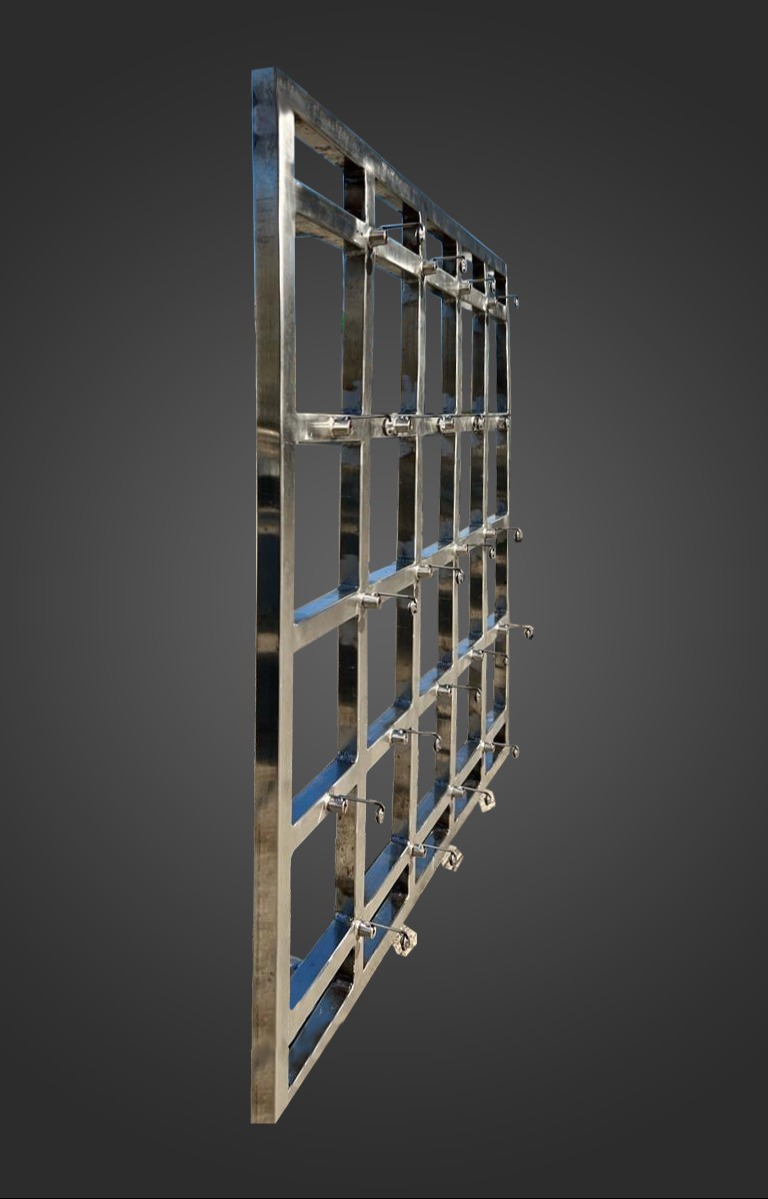
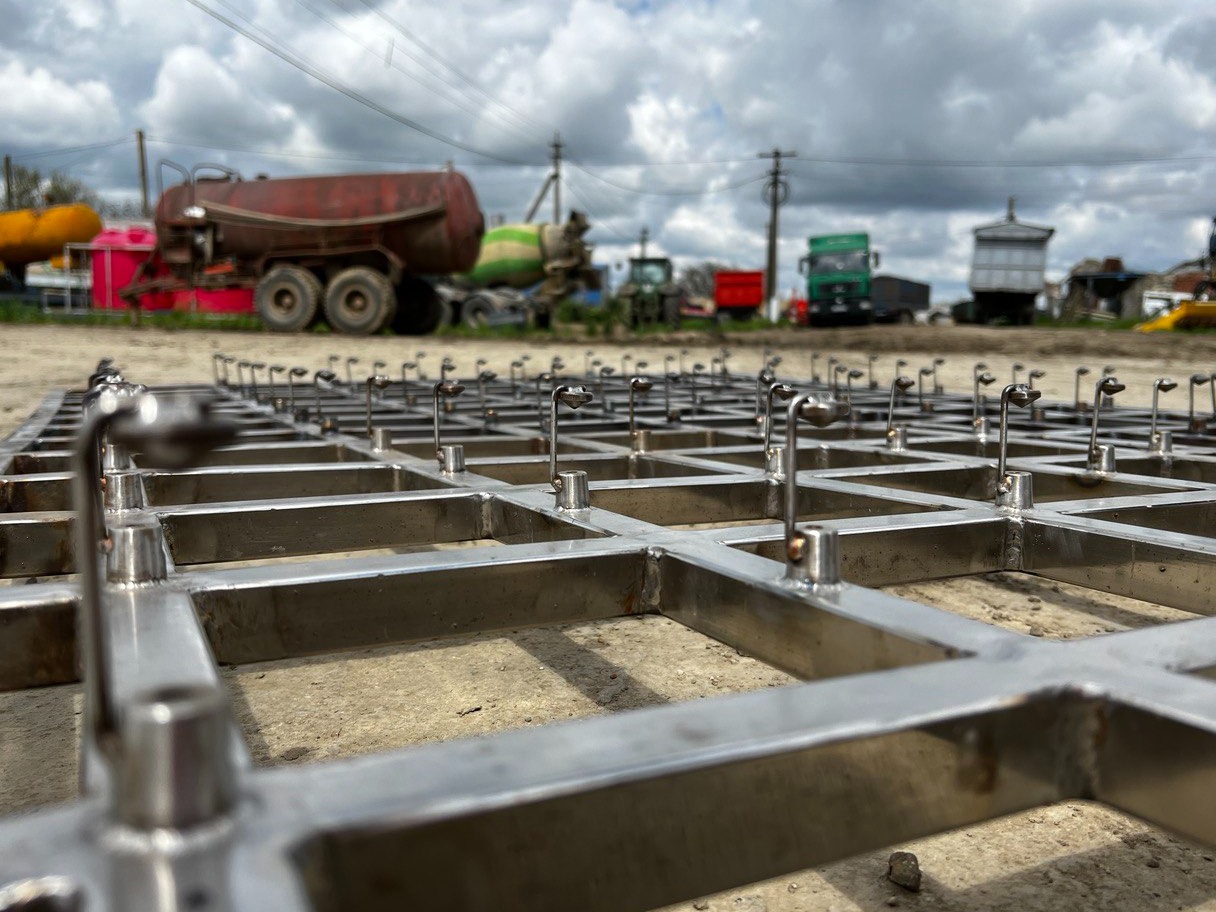

A mobile fish protection device installed in front of the water intake window and consisting of a manifold with water jet nozzles to create a volumetric hydraulic screen and flow-forming elements that create a countercurrent directed towards the water intake flow at speeds exceeding the speed of the approach flow, ensuring the removal of fish from the water intake area to a safe area of the water source , characterized in that it has an autonomous water purification and supply system containing a sequentially interconnected front chamber for water, a filter for its mechanical cleaning and a pump with a drive connected to a manifold with water-jet nozzles installed on it, coaxially at a distance of 3-10 cm flow-forming elements are located, made in the form of cones with an opening angle of 60-130° with the vertices directed towards the water-jet nozzles, while a grid is installed on the bases of the cones, the nodes of which are located coaxially with their centers and, accordingly, with the water-jet nozzles, and the lower part of the collector is hingedly connected to with the lower part of the water intake window to ensure a change in the angle of inclination of the collector from 70 to 90°.
Water from the front chamber 5 of the water intake is supplied by pump 7 (Fig. 1) through a mechanical cleaning filter 6 into the collector 2. Pump 7 creates a working pressure in the collector 2 in the range of 3-4 MPa, providing critical speeds of the jets when flowing from the water-jet nozzles 3, which when upon impact with the cones 8, they spread over their surface, extinguishing the energy of the outflow jets, forming separate bundles of streams, and when the streams leave the surface of the cones 8, they create a volumetric protective hydraulic screen 4 (fish-tight screen) with speeds below critical for juvenile fish.
Protective volumetric hydraulic screen 4 has countercurrent energy, which is constantly provided by the supply of water by pump 7 through the collector 2 to the flow-forming elements - water-jet nozzles 3 and cones 8, due to this, the larvae and juvenile fish cannot overcome the resistance of the countercurrent energy, and the larvae and juvenile fish are located at the protective volumetric hydraulic screens 4 are continuously carried away by the transit velocity of the watercourse to a safe place.
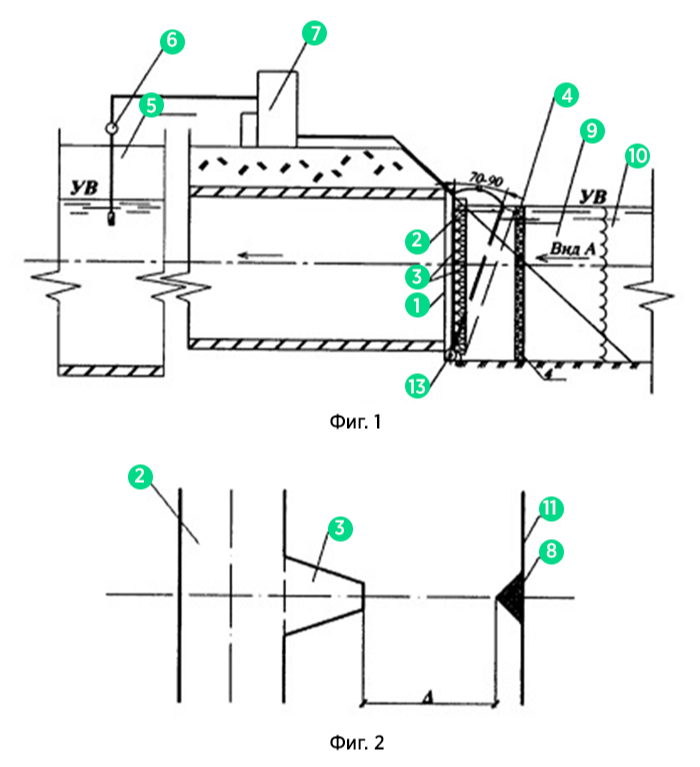
fish protection device
In June 2021, tests of a mobile fish protection device were carried out at the reclamation water intake of Soyuz Agro LLC, Novokubansky Canal, Gulkevichsky District, Krasnodar Territory
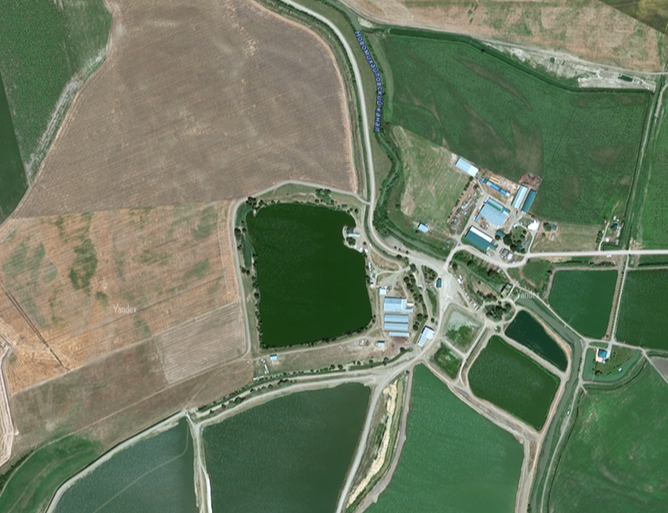
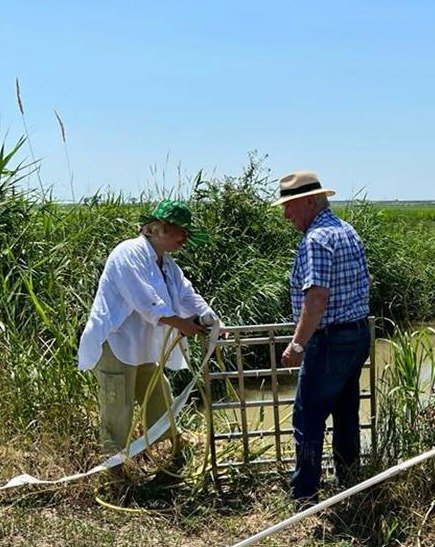
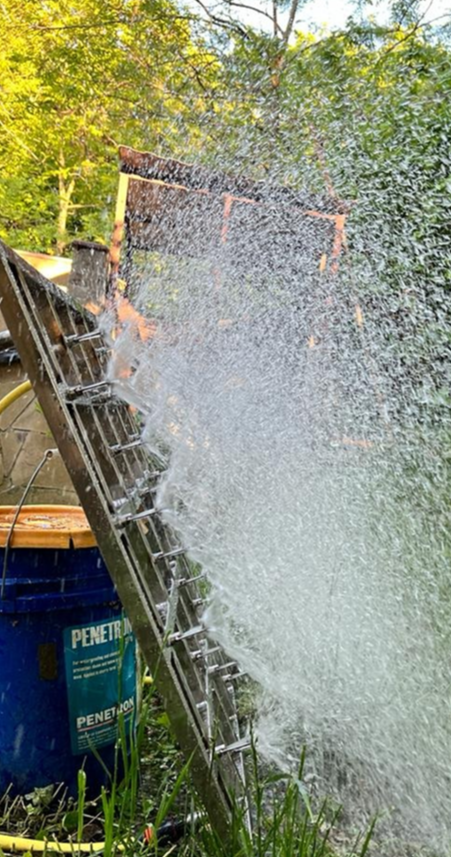
fish protection device
Our innovative environmental non-contact mobile fish protection device has no analogues in the world. It is very simple to manufacture and maintain, and the effectiveness of protecting hydrobionts from entering the reclamation water intake was 90%.
We have also developed a scheme for a water resource system on a small watercourse, which ensures a reduction in the cost of gas pumping stations by up to 10% and energy savings of up to 7%.
The invention relates to the field of reclamation and can be used as a fish protection device at reclamation water intake structures and canals.
The technical result of the invention is to increase the efficiency of protection against the death of juveniles and larvae of fish by ensuring uniform pressure on hydrobionts created by a volumetric countercurrent along the living cross-section of the prismatic channel of the water intake by a mobile fish protection device.
As a result of using the proposed technical solution, the efficiency of fish protection is 84-90%, which consists of the following factors:
- 1
The use of an autonomous system for purifying and supplying water to collector 2, which does not depend on the operation of the main hydromechanical equipment of the water intake structure, can be installed anywhere and operated independently of the main water intake equipment, as a result, the costs of operating the main hydromechanical equipment of the main pumping units are reduced, and there is no need to the need to increase the supply of the main pumps for fish protection and washing the grates 6 from debris and algae.
- 2
Washing and cleaning the grids of 11 water intake windows from debris and algae is carried out regardless of the operation of the water intake, during the operation of the fish protection device.
- 3
The rational use of water resources is ensured. Additional water consumption from water sources is reduced by up to 10% compared to existing fish protection devices that consume recycled water from the main water intake pumps, while energy consumption costs are significantly reduced, and the water intake windows of the water intake are continuously washed, which can be performed at any time, regardless of operation water intake.
of protection and invention





